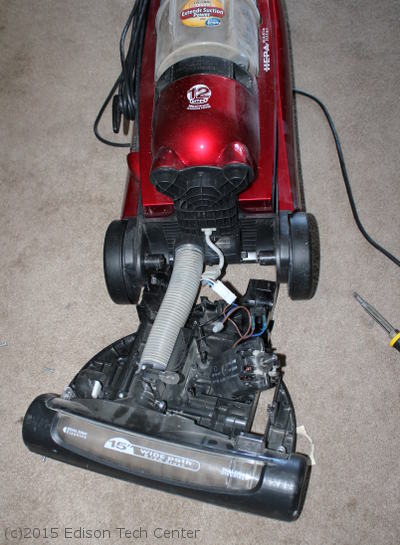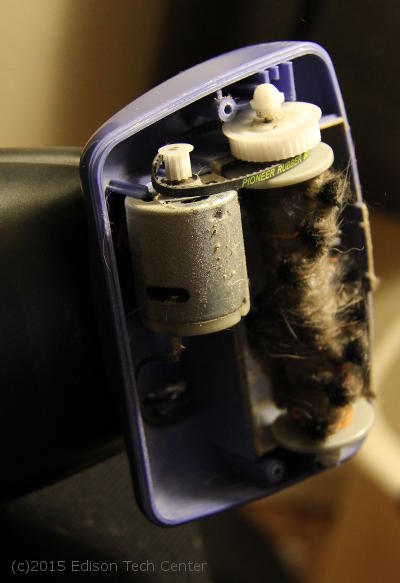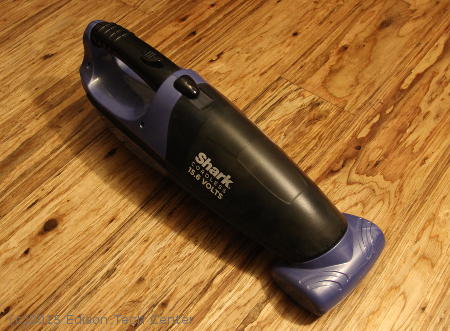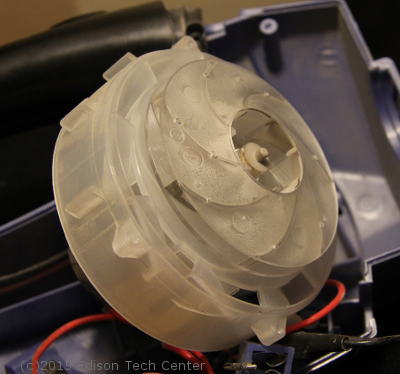Vacuum Cleaners
An fundamentally important electronic appliance
Vacuum cleaners use air pressure and agitation to remove particulates from surfaces.
The home appliance is also related to the compressor.
Compressors are used in all types of industry today. Compressors are
used with all types of gasses.
Learn more about compressors here >
How Vacuum Cleaners Work:
Bagged Vacuum Cleaners
To put it simply the standard bagged vacuum cleaner uses a spinning brush to agitate rugs and dislodge dust from surfaces, next the particulates are sucked up into a bag. An electric motor typically between 500 and 1000 watts spins a type of turbine or wheel with curved blades to compress or move the air. This creates low pressure in a part of the system which results in more air being sucked in to try to make an equilibrium. Air is ejected from the system through the bag membrane. The bag (usually paper with a fabric exterior bag) acts as a filter. In newer vacuums there may be a HEPA filter after the bag to further prevent fine dust from coming back into the room.
Several diagrams of various types of vacuums >
Problems
Bagged vacuums were popular with manufacturers as they could create a dependence on specific bag sizes and configurations. Having non-standard bags was good for profits but not logical for consumers. A more technical problem with bag systems is that the surface area of the bag 'filter' decreases as the bag fills up. The suction power then is reduced as the bag fills up. James Dyson, an engineer from England sought to improve this problem by reviving an old idea to create a cycle system. As for the financial problem of expensive non-standard bags some consumers moved to other bagless systems. Bagged vacuums are still the most common vacuum found in most households. Most vacuums blow fine particles under 10 microns back into the air.
Water Vacuums
Water vacuum cleaners help solve the problem of not filtering fine particles. Air is sucked into a
tank of water, particles are trapped in the water and the moist air exits back into the room.
More on water
vacuums from manufacturer
Karcher >
Bagless Vacuums:
The bagless vacuum has become increasingly popular, especially for commercial and industrial use. Some bagless vacuums function similar to a bagged vacuum except that instead of using a bag as the filter, there is another type of filter in connection with a rigid container. Dust is collected in a plastic bin which is easily emptied. The electric motors used with this type of vacuum are often 2000 watts, more powerful than bagged vacuums because more power is needed to squeeze the air through a filter with a smaller surface area. The most well known bagless vacuum manufacturer is the "ShopVac". A great advantage with this type is that some water can be collected using this system.
 |
 |
Above left: induction motor which runs the brush is seen
Above right: small electric motor used to run the brush on the end of a small vacuum
Below: electric rechargeable small vacuum, the fan (or "turbine") to the right draws air through the snout (not seen here). The air is drawn through a filter, into the body of the machine seen here and out vents.

 |
 |
Dyson and some other brands use a cyclonic system. The cyclonic vacuum spins the particulates and they gather at the bin perimeter and fall down. The air then exits in the center of the device either up or down through a filter. This system maintains consistent suction and filters the air better than other systems. There may be a second stage in the system where more fine particles are extracted by spinning them in an upper chamber.
Thanks to EngineersMechanical and electrical engineers have made our world a better place by developing the vacuum. The vacuum cleaner saves lots of time. Prior to the vacuum cleaner it was typical to take rugs outside each week and 'beat' the dust out. Other dust accumulated on the tile, stone or wood floors was washed off with a mop. Vacuum pioneer James Dyson and the Edison Tech Center both state that engineers have a great power to change the world for the better and we encourage young people to choose engineering.
Further Reading:
Vacuum Cleaners by Chris Woodford
Dyson
Hoover Vacuum Cleaner
Related Topics:
|
Electric Motors |
Electric Ranges and Calrods |
The Fan |
Dishwashers |
Loudspeakers |
More Stuff |
Article by MW
Sources:
Vacuum Cleaners - Chris Woodford National Public Radio Dyson
Photos/Video:
Edison Tech Center
Whelan Communications
For use of Edison Tech Center images and videos see our licensing agreement.

